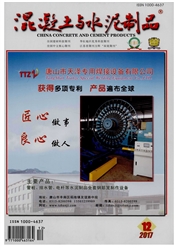

 中文摘要:
中文摘要:
传统的隔震分析大都是基于一维和二维地震动进行的.很少考虑三维地震动的作用。且对于不同维数地震动输入下,拉压刚度比对隔震支座面压的影响也缺乏系统的研究。本文对8度区的某高层隔震结构进行了时程分析,首先在拉压刚度比不变的情况下.对比研究了地震动输入维数对隔震支座面压的影响。然后以地震动输入维数为定量,拉压刚度比为变量,对隔震支座面压的变化情况和变化规律进行了分析。研究发现,拉压刚度比不变时,随着地震动输入维数的增加.隔震支座的压应力和拉应力均呈现逐渐增大的趋势。相同维数地震动输入下.拉压刚度比对隔震支座的拉应力影响较大,但对压应力影响很小,且拉压刚度比相同时,隔震支座的拉应力远超过规范值。
 英文摘要:
英文摘要:
The traditional isolation analysis is mostly based on one-dimensional and two-dimensional ground motion, and rarely consider the role of three-dimensional ground motion. And the influence of tension and compression stiffness on the surface pressure of the isolation beating is not studied systematically for different ground motion loads. In this paper, the time-history analysis of a high-level isolation structure in the 8 degree area is carried out. Firstly, the influence of the input dimension of the ground motion on the surface pressure of the isolation bearing is studied. Then, the change of the surface pressure of the isolation bearing and the variation law are analyzed. The results shows that the compressive stress and tensile stress of the isolated bearing are gradually increasing with the increase of the input dimension of the ground motion. With the same dimension of ground motion input, the tensile and compressive stiffness has a greater effect on the tensile stress of the isolation bearing, but the impact of the compressive stress is very small, and the tensile and compressive stiffness ratio is the same, the tensile stress of the isolation bearing is far more than the standard value.
 同期刊论文项目
同期刊论文项目
 同项目期刊论文
同项目期刊论文
 期刊信息
期刊信息
